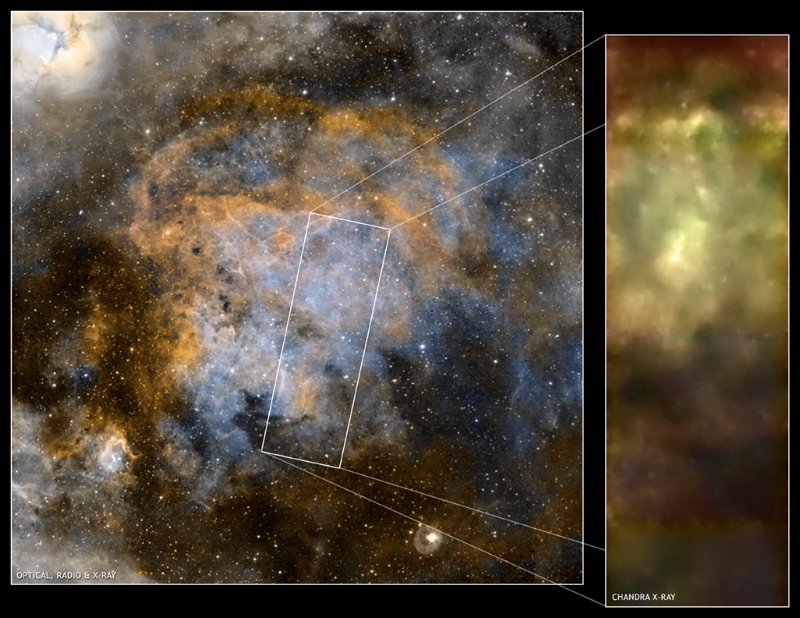
 Credit:Chandra X-ray: NASA/CXC/HSC/J. Keohane et al.; ROSAT X-ray: NASA/ROSAT; Optical: NOAO/CTIO/P.F. Winkler et al.; Radio: NSF/NRAO/VLA/G. Dubner et al.
Credit:Chandra X-ray: NASA/CXC/HSC/J. Keohane et al.; ROSAT X-ray: NASA/ROSAT; Optical: NOAO/CTIO/P.F. Winkler et al.; Radio: NSF/NRAO/VLA/G. Dubner et al.
Stellar Death Across the Spectrum
Supernova remnants usually come in two types. Center-filled remnants which have bright emission from their centers are sometimes called "Plerions", from the Greek "pleres" meaning "full". The canonical plerion is the Crab Bebula. Others are "shell-type" supernova which have bright edges and fainter interiors. But sometime the distinction is not so clear. These "mixed morphology" nebulae are complex objects showing characteristics of both the center-filled and shell-like shapes. W28, a supernova remnant buried within a molecular cloud, is perhaps the best example of this mixed-up class, and provides astronomers with important details about how these stellar explosions help shape the galactic environment. The image above shows W28 in wavelengths from radio (orange from the VLA), through optical (in grey and white, from CTIO) to the X-ray (from ROSAT, in blue, and from Chandra). This "full-spectrum view" helps astronomers understand the detailed energetics of these nebula, and helps show how new stars might be created from the shocking event of the stellar explosion.
<
HEA Dictionary ● Archive
● Search HEAPOW
● Other Languages
● HEAPOW on Facebook
● Download all Images
● Education ● HEAD
>
Each week the HEASARC
brings you new, exciting and beautiful images from X-ray and Gamma ray
astronomy. Check back each week and be sure to check out the HEAPOW archive!
Page Author: Dr. Michael F. Corcoran
Last modified Monday, 26-Feb-2024 17:47:39 EST


